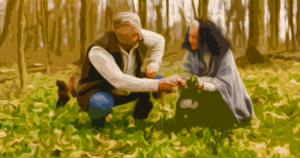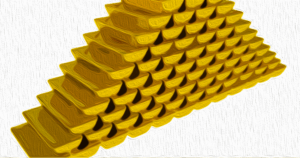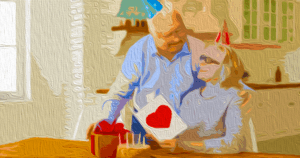Introduction to SEC Approval
The U.S. Securities and Exchange Commission (SEC) recently gave the green light to the first set of spot Ethereum (ETH) ETFs. This development is significant for financial markets, considering the widespread popularity of the asset. Notably, spot Bitcoin ETFs made history as the fastest-growing ETFs, as highlighted by BlackRock CEO Larry Fink.
Implications of Approved Spot Ethereum ETFs
The newly approved spot Ethereum ETFs provide investors with a direct path to Ethereum, the second-largest cryptocurrency by market capitalization, without the need to buy and secure the digital asset themselves.
Surprise Approval Odds Shift
The sudden shift in approval odds for these ETFs surprised many on a recent Monday. Analysts from Bloomberg, Eric Balchunas, and James Seyffart, raised the approval odds from 25% to 75%, sparking discussions. Balchunas mentioned a potential turnaround by the SEC on this politically charged issue, catching many off guard.
Ethereum Classification Debate
There has been an ongoing debate on whether Ethereum should be classified as a security or a commodity. Critics argue that Ethereum meets the criteria of the Howey test, suggesting it should be treated as a security. The Howey test includes aspects like an investment of money, profit expectations, common enterprise, and reliance on the efforts of others.
Regulatory Developments and ETF Approval
Recent regulatory shifts, coupled with the ETF approval, indicate a move towards regulating Ethereum as a commodity. A bill, H.R. 4763 – Financial Innovation and Technology Act 21 (FIT 21), passed the House, aiming to establish a regulatory framework for digital assets. The White House initially expressed reservations but showed willingness to collaborate on refining the bill.
Implications of FIT 21
If FIT 21 progresses through the Senate and receives President Biden's approval, Ethereum could fall under the commodity category based on the new guidelines. The bill aims to provide clarity and a legal framework for digital asset trading, defining the roles of regulatory bodies like the SEC and CFTC.
Congressional Support and Future Outlook
The House passing FIT 21 signals a step towards a clearer regulatory environment for cryptocurrencies. U.S. Senator Cynthia Lummis mentioned the formation of a pro-crypto coalition within Congress, indicating growing support for digital asset legislation.
Frequently Asked Questions
How to Open a Precious Metal IRA
First, you must decide if your Individual Retirement Account (IRA) is what you want. You must complete Form 8606 to open an account. Then you must fill out Form 5204 to determine what type of IRA you are eligible for. This form should be completed within 60 days after opening the account. Once this is done, you can start investing. You can also contribute directly to your paycheck via payroll deduction.
Complete Form 8903 if your Roth IRA option is chosen. Otherwise, the process will be identical to an ordinary IRA.
To qualify for a precious-metals IRA, you'll need to meet some requirements. You must be at least 18 years of age and have earned income to qualify for a precious metals IRA. You can't earn more than $110,000 per annum ($220,000 in married filing jointly) for any given tax year. Additionally, you must make regular contributions. These rules apply to contributions made directly or through employer sponsorship.
You can use a precious-metals IRA to purchase gold, silver and palladium. You can only purchase bullion in physical form. This means you won't be allowed to trade shares of stock or bonds.
Your precious metals IRA may also be used to invest in precious-metal companies. Some IRA providers offer this option.
However, there are two significant drawbacks to investing in precious metals via an IRA. First, they are not as liquid or as easy to sell as stocks and bonds. They are therefore more difficult to sell when necessary. Second, they are not able to generate dividends as stocks and bonds. Therefore, you will lose money over time and not gain it.
What is the best precious metal to invest in?
Answering this question will depend on your willingness to take some risk and the return you seek. Gold has been traditionally considered a haven investment, but it's not always the most profitable choice. You might not want to invest in gold if you're looking for quick returns. You should invest in silver if you have the patience and time.
If you're not looking to make quick money, gold is probably your best choice. If you want to invest in long-term, steady returns, silver is a better choice.
What Does Gold Do as an Investment Option?
Gold's price fluctuates depending on the supply and demand. Interest rates can also affect the gold price.
Gold prices are volatile due to their limited supply. Additionally, physical gold can be volatile because it must be stored somewhere.
Which precious metals are best to invest in retirement?
The best precious metal investments are gold and silver. Both can be easily bought and sold, and have been around since forever. If you want to diversify your portfolio, you should consider adding them to your list.
Gold: Gold is one the oldest forms currency known to man. It's stable and safe. This makes it a good option to preserve wealth in uncertain times.
Silver: Silver is a popular investment choice. It is an excellent choice for investors who wish to avoid volatility. Silver, unlike gold, tends not to go down but up.
Platinium: Another form of precious metal is platinum, which is becoming more popular. Like gold and silver, it's very durable and resistant to corrosion. It is, however, more expensive than its competitors.
Rhodium: Rhodium is used in catalytic converters. It is also used as a jewelry material. And, it's relatively cheap compared to other types of precious metals.
Palladium (or Palladium): Palladium can be compared to platinum, but is much more common. It's also more accessible. It is a preferred choice among investors who are looking to add precious materials to their portfolios.
Statistics
- Instead, the economy improved, stocks rebounded, and gold plunged, losing 28 percent of its value in 2013. (aarp.org)
- This is a 15% margin that has shown no stable direction of growth but fluctuates seemingly at random. (smartasset.com)
- The price of gold jumped 131 percent from late 2007 to September 2011, when it hit a high of $1,921 an ounce, according to the World Gold Council. (aarp.org)
- Indeed, several financial advisers interviewed for this article suggest you invest 5 to 15 percent of your portfolio in gold, just in case. (aarp.org)
- You can only purchase gold bars at least 99.5% purity. (forbes.com)
External Links
forbes.com
- Gold IRA: Add some sparkle to your retirement nest egg
- Understanding China's Evergrande Crisis – Forbes Advisor
irs.gov
bbb.org
finance.yahoo.com
How To
A growing trend: Gold IRAs
Investors seek diversification and protection against inflation by using gold IRAs.
The gold IRA allows investors to purchase physical gold bars and bullion. It can be used as a tax-free way to grow and it is an alternative investment option for people who are not comfortable with stocks or bonds.
Investors can manage their assets with a gold IRA without worrying about market volatility. The gold IRA can be used to protect against inflation or other potential problems.
Investors also have the benefit of physical gold, which has unique properties such durability, portability and divisibility.
Additionally, the gold IRA has many benefits. It allows you to quickly transfer your gold ownership to your heirs. The IRS doesn't consider gold a commodity or currency.
Investors looking for financial security are increasingly turning to the gold IRA.
—————————————————————————————————————————————————————————————-
By: Nik Hoffman
Title: SEC Approval of Spot Ethereum ETFs
Sourced From: bitcoinmagazine.com/markets/sec-approves-spot-ethereum-etfs
Published Date: Thu, 23 May 2024 21:09:09 GMT












